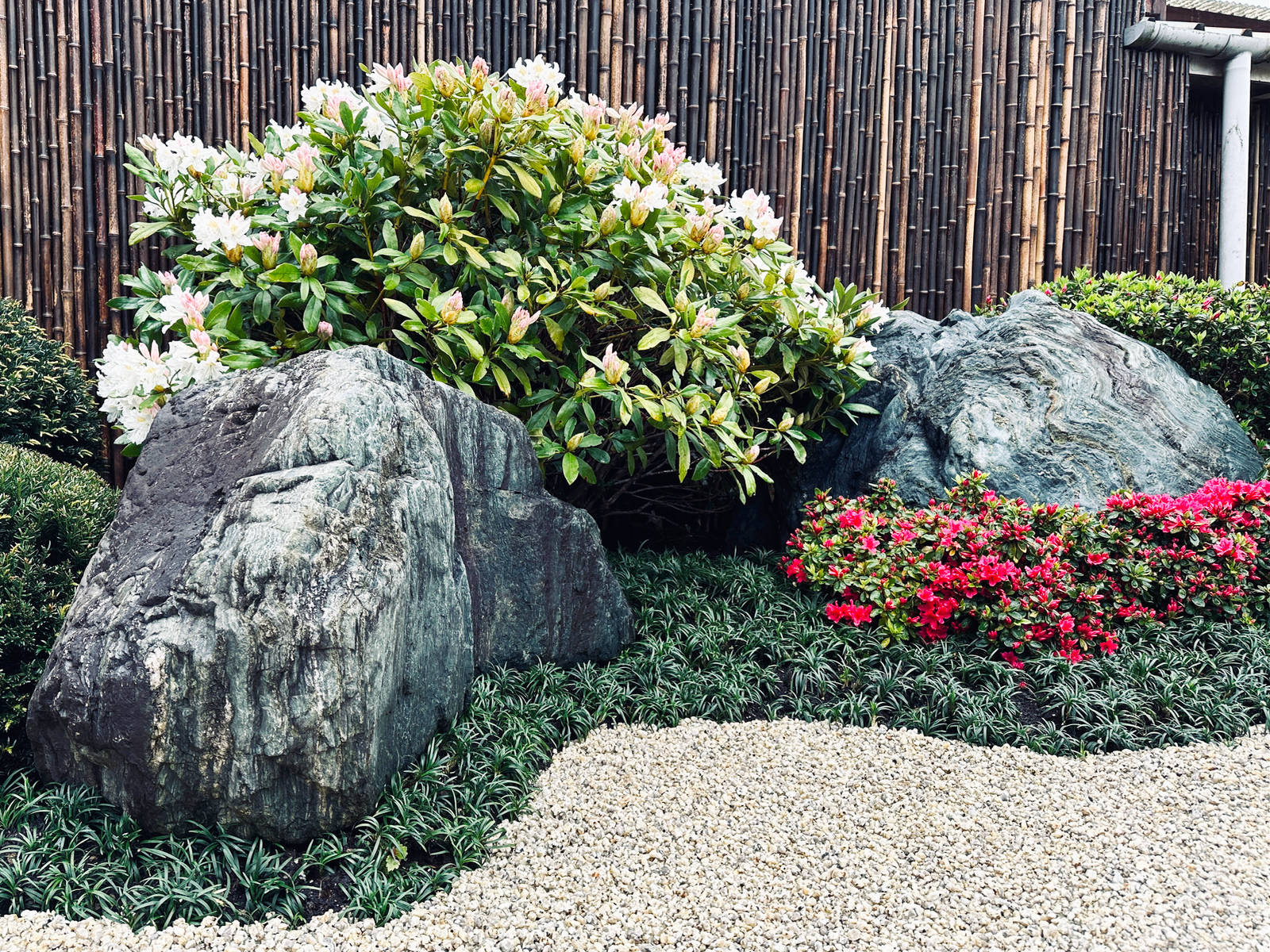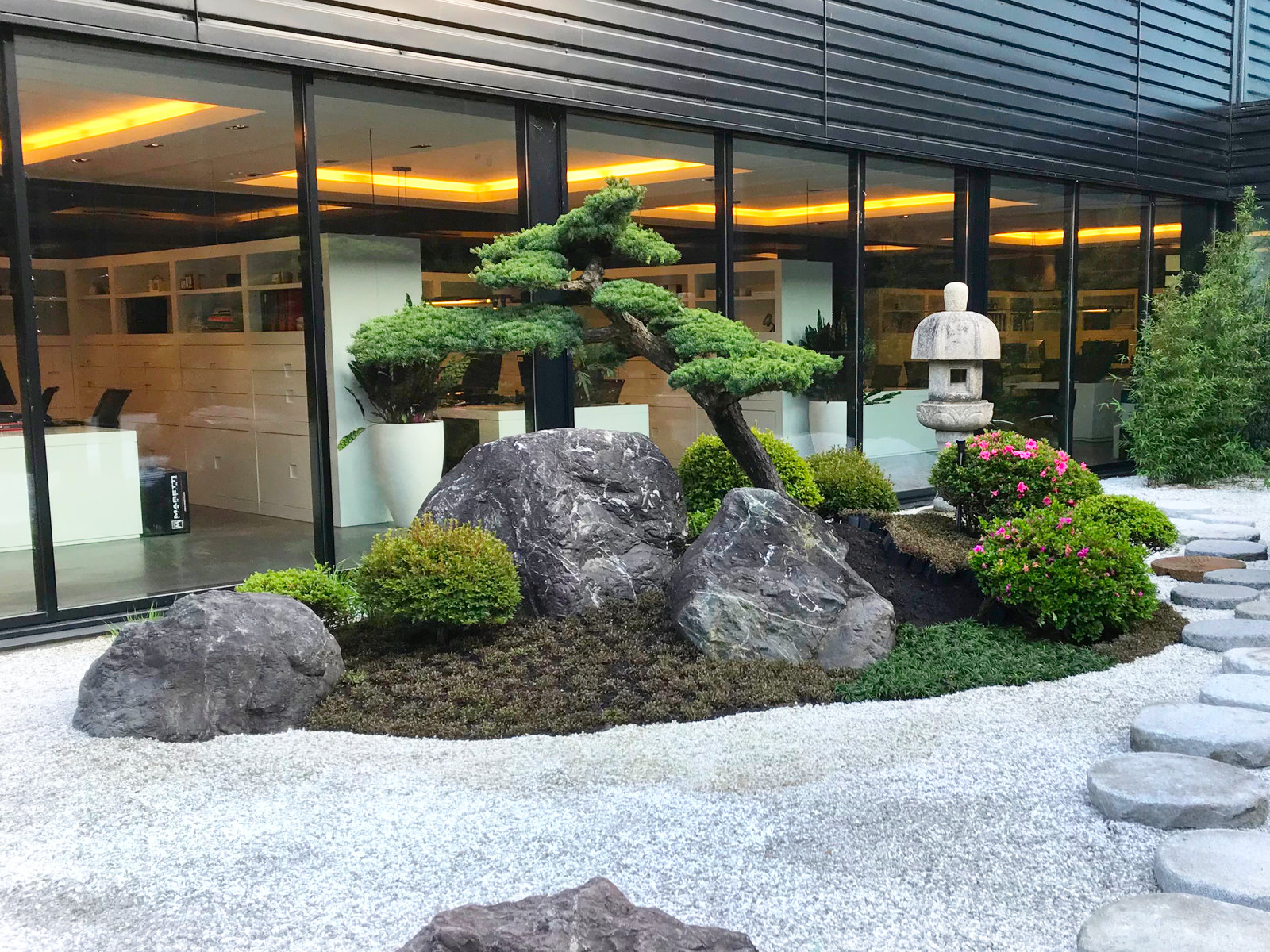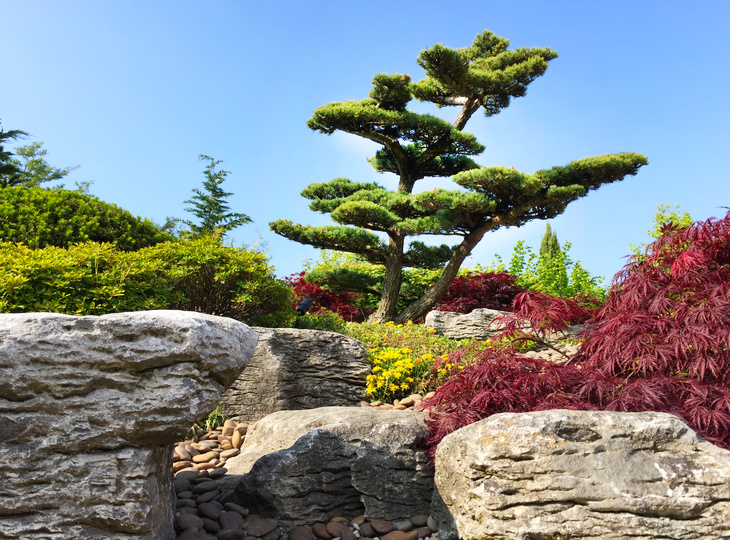Japanese Rocks & Stones - Information

Ornamental Rocks in the Traditional Japanese Garden. An Exploration of Origins, Meaning, and Aesthetic Principles. Available Exclusively at Yokoso Japanese Gardens
In the timeless tradition of Japanese garden design, few elements possess as much symbolic, aesthetic, and structural significance as ornamental rocks. Far beyond mere decorative additions, these stones form the very soul of the garden—expressing nature's majesty, guiding visual flow, and anchoring the composition of space. Their careful selection, placement, and integration are rooted in centuries-old cultural and spiritual values, making them indispensable in creating authentic Japanese garden environments. At Yokoso Japanese Gardens, we offer a unique and exclusive selection of authentic ornamental rocks sourced from Japan and selected regions, ensuring that each stone carries the weight of tradition, artistry, and natural beauty.
The Role of Ornamental Rocks in the Traditional Japanese Garden
Ornamental rocks—referred to in Japanese as ishigumi (石組)—are fundamental structural and symbolic components of traditional Japanese gardens. They are not merely placed for decoration; each rock tells a story and conveys a sense of permanence, stability, and connection to the natural world. In early Japanese culture, particularly influenced by Shinto and later Buddhist beliefs, rocks were considered sacred—dwelling places of kami (spirits). Over time, their role evolved into something both spiritual and aesthetic. In the garden, they represent mountains, islands, or abstract concepts such as strength, endurance, and harmony. Unlike the Western preference for symmetry and formal geometry, Japanese gardens seek asymmetry, spontaneity, and organic placement—concepts often manifested through the careful positioning of ornamental rocks.
The Historical Roots: Sakuteiki and Stone Placement Principles
The earliest written manual on Japanese garden design, the Sakuteiki (作庭記), compiled in the 11th century, lays the foundational philosophy for stone placement. This ancient text emphasizes that rocks should be set 'in accordance with the way of the gods' (shin no michi), underscoring the spiritual dimension of landscape creation. One of the key principles from the Sakuteiki is 'place the stones as if they are growing out of the ground.' This naturalistic approach encourages designers to respect the inherent character of each rock—its shape, grain, and orientation—and to position it as if it belongs to the landscape. Another important concept is the San Zon Seki (三尊石) arrangement, or 'three deity stones.' This configuration involves a central tall stone flanked by two smaller stones, symbolizing a triad of Buddhist deities or spiritual harmony. It is often used to create focal points and spiritual anchors in a garden composition.
Additional placement styles include:
Tate-ishi (standing stones) - Representing vertical strength and masculinity.
Yoko-ishi (horizontal stones) - Denoting calmness and femininity.
Hiraki-ishi (flat stones) - Often used as stepping stones or to connect areas subtly.
Shintai-ishi (guardian stones) - Placed at entrances or near water features.
Types and Origins of Ornamental Rocks
In the traditional Japanese garden, specific types of rocks are selected based on their color, texture, shape, and origin. Each variety carries a distinct character, and their use is determined by both aesthetic goals and symbolic intentions. The success of a Japanese garden depends not only on the type of rocks chosen but also on their harmonious interaction with one another and their surroundings. Common and valued types include:
Kuro-Gane Ishi (Iron Black Stones) - Dark, often with a metallic luster, these rocks exude strength and depth. They are often used in bold, central placements or as accents near water features.
Shima Ishi (Island Stones) - Rounded, weathered stones from riverbeds or coastal regions, symbolizing islands or distant shores. Often used in dry landscape (karesansui) gardens to represent islands within raked gravel seas.
Fujian Stones (Imported from China) - Used historically in more opulent settings, these stones often possess dramatic textures and colors, brought over during periods of Chinese influence.
Togari Ishi (Pointed Stones) - Tall and sharp in form, these stones are typically placed vertically and used in mountain or waterfall compositions.
Shikoku Rock (National Treasure) - Shikoku rock refers to a category of natural stone found on Shikoku Island, located in southern Japan. This region is geologically rich, with a diverse range of mineral compositions, terrain, and erosion patterns that produce stones of exceptional texture and color.
Aji Stone (Aji-Ishi) - Aji Stone is one of the most renowned types of granite quarried in Kagawa Prefecture, on the northeastern coast of Shikoku. Known for its fine grain, subtle sparkle, and durability, Aji Stone is often used in ornamental features such as lanterns, tsukubai basins, and sculptures.
Iyo Stone (Iyo-Ishi) - Quarried in Ehime Prefecture, Iyo Stone is a weathered limestone with a softer texture and earthy tones, ranging from beige to light brown. Its organic appearance makes it a favorite for natural-looking rock arrangements and retaining walls.
Sanuki Stone - This is a term sometimes used to describe volcanic or sedimentary stones from the Sanuki region (modern-day Kagawa). These rocks tend to be rugged, with distinctive shapes formed by natural erosion and lava flows.
At Yokoso Japanese Gardens, we maintain close relationships with trusted sources in Japan to ensure the authenticity and natural origin of our ornamental rocks. Each stone is hand-selected for its character, suitability, and historical alignment with Japanese garden traditions.
Materials and Characteristics
The material makeup of ornamental rocks varies, but they typically consist of natural volcanic or sedimentary stone with distinctive weathering, surface texture, and coloration. The most valued materials include:
Granite - Durable and resistant to erosion; ideal for structure stones and pathways.
Basalt - A dense volcanic rock often found in dark, dramatic tones.
Limestone - Lighter in color and softer in form, often used in more contemplative garden spaces.
Sandstone - Warm-toned and texturally rich, frequently used in dry gardens.
The weathered look of these stones, sometimes enhanced by centuries of exposure to wind and water, is crucial. Moss, lichen, and patina add to their charm and visual maturity—qualities highly prized in Japanese aesthetics, especially in the concept of wabi-sabi.
Placement and Integration in Garden Design
The placement of ornamental rocks is arguably the most complex and refined aspect of Japanese garden design. A skilled designer considers: The stone's orientation: Upright vs. recumbent. Its visual weight: Balancing heavy and light elements. Shadow and light: How the stone reacts to sun and shade throughout the day. Contextual harmony: Integration with plants, water, and built structures. Rather than being grouped arbitrarily, stones are composed into 'stone compositions' (ishigumi) that establish a natural flow and visual rhythm. This deliberate irregularity evokes natural mountain formations or riverbeds, guiding the viewer's eye while maintaining an air of effortlessness.
Yokoso Japanese Gardens – Your Exclusive Source for Authentic Ornamental Rocks
At Yokoso Japanese Gardens, we take great pride in offering an exclusive selection of ornamental rocks that meet the rigorous standards of traditional Japanese garden design. Our stones are imported directly from Japan or sourced from carefully vetted European quarries that mimic the mineral composition and aesthetic of their Japanese counterparts.
Every rock we offer is: Hand-selected by garden design experts. Historically appropriate for traditional Japanese landscaping. Available in a range of sizes to suit intimate courtyards or expansive stroll gardens. Unique—no two stones are alike. Whether you're building a serene karesansui rock garden, a dynamic waterfall composition, or a tranquil pond-side retreat, our ornamental rocks provide the foundation for authenticity and beauty. With personalized consultation and delivery across Europe, Yokoso Japanese Gardens ensures that each stone finds its rightful place in your garden.
Conclusion
Ornamental rocks are the silent anchors of the Japanese garden—grounding its design, enriching its symbolism, and elevating its beauty. Guided by centuries of tradition and refined aesthetics, these stones represent much more than simple objects of nature. They are the embodiment of balance, reverence, and artistry. For those who seek to bring this timeless element into their own landscapes, Yokoso Japanese Gardens offers an unparalleled gateway to authenticity. With our exclusive selection and deep respect for tradition, we invite you to discover the art of stone in the Japanese garden.
Explore the history, types, and placement of ornamental rocks in traditional Japanese gardens. Learn about Sakuteiki principles and discover authentic stones exclusively at Yokoso Japanese Gardens.
#JapaneseGarden #ZenGarden #OrnamentalRocks #JapaneseGardenDesign #Ishigumi #Sakuteiki #SanZonSeki #AuthenticJapaneseGarden #YokosoJapaneseGardens #JapaneseLandscapeDesign #ShikokuStone #SettingStones #GuardianStones #JapaneseRocks #Shinto














Contact Yokoso Japanese Gardens